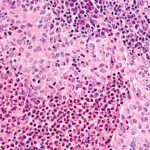 Langerhans cell histiocytosis (LCH) is a rare disorder of histiocyte proliferation. Previous case studies suggest a higher prevalence of hematologic and solid malignancies among LCH patients, possibly due to treatment with tumorigenic agents such as etoposide. We report the first large, single-institution experience of adult LCH patients with additional malignancies to study the characteristics of these patients. We identified 132 consecutive patients >18 years of age with histologically confirmed LCH at our center between 1990 and 2015. Our cohort of adult LCH patients demonstrates an unusually high number of additional malignancies. Our study includes predominantly malignancies diagnosed preceding or concurrent with LCH, suggesting a cause of malignancy independent of LCH treatment. Further exploration of the biology of this rare disease may elucidate the mechanism of frequent additional malignancies. You can find the full article here.
Langerhans cell histiocytosis (LCH) is a rare disorder of histiocyte proliferation. Previous case studies suggest a higher prevalence of hematologic and solid malignancies among LCH patients, possibly due to treatment with tumorigenic agents such as etoposide. We report the first large, single-institution experience of adult LCH patients with additional malignancies to study the characteristics of these patients. We identified 132 consecutive patients >18 years of age with histologically confirmed LCH at our center between 1990 and 2015. Our cohort of adult LCH patients demonstrates an unusually high number of additional malignancies. Our study includes predominantly malignancies diagnosed preceding or concurrent with LCH, suggesting a cause of malignancy independent of LCH treatment. Further exploration of the biology of this rare disease may elucidate the mechanism of frequent additional malignancies. You can find the full article here.
Featured posts
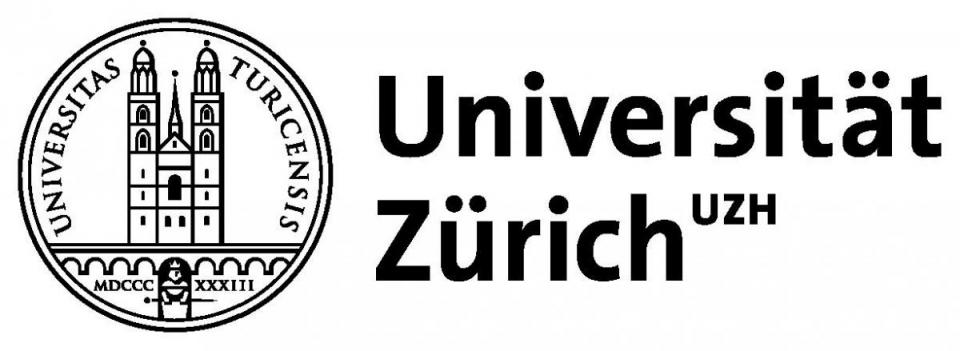 The 7th RARE DISEASES SUMMER SCHOOL 2019 is organized by radiz – Rare Disease Initiative Zurich of the University of Zurich. It will take place in the Kartause Ittingen, Warth (Canton Thurgau), from July 10th to July 12th 2019. A wide variety of subjects in the arena of rare diseases will be covered. There will be lectures by national and international rare disease experts, workshops and poster presentations by participants. Subjects include drug development, clinical trials, regulatory aspects, patient registries, ethical considerations, as well as what rare diseases may tell us about common diseases. The application deadline is April 2nd 2019. More information you can find here.
The 7th RARE DISEASES SUMMER SCHOOL 2019 is organized by radiz – Rare Disease Initiative Zurich of the University of Zurich. It will take place in the Kartause Ittingen, Warth (Canton Thurgau), from July 10th to July 12th 2019. A wide variety of subjects in the arena of rare diseases will be covered. There will be lectures by national and international rare disease experts, workshops and poster presentations by participants. Subjects include drug development, clinical trials, regulatory aspects, patient registries, ethical considerations, as well as what rare diseases may tell us about common diseases. The application deadline is April 2nd 2019. More information you can find here.
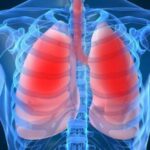 The presence of rare comorbidities in patients with cardiovascular disease (CVD) presents a diagnostic challenge to cardiologists. In evaluating these patients, cardiologists are faced with a unique opportunity to shorten diagnosis times and direct patients towards correct treatment pathways. Idiopathic pulmonary fibrosis (IPF), a type of interstitial lung disease (ILD), is an example of a rare disease where patients frequently demonstrate comorbid CVD. Both CVD and IPF most commonly affect a similar patient demographic: men over the age of 60 years with a history of smoking. Moreover, IPF and heart failure (HF) share a number of symptoms. As a result, patients with IPF can be misdiagnosed with HF and vice versa. This article aims to increase awareness of IPF among cardiologists, providing an overview for cardiologists on the differential diagnosis of IPF from HF, and describing the signs and symptoms that would warrant referral to a pulmonologist with expertise in ILD. Once patients with IPF have received a diagnosis, cardiologists can have an important role in managing patients who are candidates for a lung transplant or those who develop pulmonary hypertension (PH). The full article you can find here.
The presence of rare comorbidities in patients with cardiovascular disease (CVD) presents a diagnostic challenge to cardiologists. In evaluating these patients, cardiologists are faced with a unique opportunity to shorten diagnosis times and direct patients towards correct treatment pathways. Idiopathic pulmonary fibrosis (IPF), a type of interstitial lung disease (ILD), is an example of a rare disease where patients frequently demonstrate comorbid CVD. Both CVD and IPF most commonly affect a similar patient demographic: men over the age of 60 years with a history of smoking. Moreover, IPF and heart failure (HF) share a number of symptoms. As a result, patients with IPF can be misdiagnosed with HF and vice versa. This article aims to increase awareness of IPF among cardiologists, providing an overview for cardiologists on the differential diagnosis of IPF from HF, and describing the signs and symptoms that would warrant referral to a pulmonologist with expertise in ILD. Once patients with IPF have received a diagnosis, cardiologists can have an important role in managing patients who are candidates for a lung transplant or those who develop pulmonary hypertension (PH). The full article you can find here.
System building and improvement for the diagnosis and treatment of rare diseases in Shanghai, China

Shanghai has always attached importance to the prevention and treatment of rare diseases and has been at the forefront in China. The Shanghai Rare Diseases Diagnosis and Treatment Center, Shanghai Children’s Rare Diseases Diagnosis and Treatment Center, and Shanghai Rare Diseases Specialist Clinic were established in February 2018. Moreover, with the development of clinical pathways for rare diseases and the provision of related services such as diagnosis, treatment, screening, information and training, the service system for diagnosis and treatment of rare diseases in Shanghai has formed, which greatly improves the accessibility of medical services for patients with rare diseases in Shanghai and surrounding areas, and is of great significance in reducing the burden on patients with rare diseases. Meanwhile, it also gives an important reference for other regions of China for providing rare disease diagnosis and treatment services. The full article you can find here.
Humoral immunodeficiencies: conferred risk of infections and benefits of immunoglobulin replacement therapy
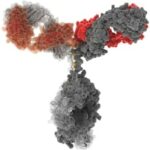 Primary immunodeficiency (PID) diseases result from genetic defects of the immune system that increase a patient’s susceptibility to infections. The types of infections that occur in patients with PID diseases are dictated largely by the nature of the immunodeficiency, which can be defined by dysfunction of cellular or humoral defenses. An increasing number of PID diseases, including those with both cellular and humoral defects, have antibody deficiency as a major feature, and as a result can benefit from immunoglobulin replacement therapy. Although immunoglobulin replacement therapy is the cornerstone of treatment for the majority of these conditions, a thorough understanding of the specific infections for which these patients are at increased risk can hasten diagnosis and guide additional therapies. Moreover, the infection trends in some patients with PID disease who have profound defects of cellular immunity, such as autosomal-dominant hyper-IgE syndrome (Job/Buckley syndrome) or dedicator of cytokinesis 8 (DOCK8) deficiency, suggest that select patients might benefit from immunoglobulin replacement therapy even if their immunodeficiency is not limited to antibody defects. In this review, we provide an overview of the predisposition to infections seen in PID disease that may benefit from immunoglobulin replacement therapy. To read the full article check here.
Primary immunodeficiency (PID) diseases result from genetic defects of the immune system that increase a patient’s susceptibility to infections. The types of infections that occur in patients with PID diseases are dictated largely by the nature of the immunodeficiency, which can be defined by dysfunction of cellular or humoral defenses. An increasing number of PID diseases, including those with both cellular and humoral defects, have antibody deficiency as a major feature, and as a result can benefit from immunoglobulin replacement therapy. Although immunoglobulin replacement therapy is the cornerstone of treatment for the majority of these conditions, a thorough understanding of the specific infections for which these patients are at increased risk can hasten diagnosis and guide additional therapies. Moreover, the infection trends in some patients with PID disease who have profound defects of cellular immunity, such as autosomal-dominant hyper-IgE syndrome (Job/Buckley syndrome) or dedicator of cytokinesis 8 (DOCK8) deficiency, suggest that select patients might benefit from immunoglobulin replacement therapy even if their immunodeficiency is not limited to antibody defects. In this review, we provide an overview of the predisposition to infections seen in PID disease that may benefit from immunoglobulin replacement therapy. To read the full article check here.
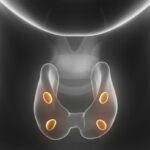
Hypoparathyroidism is a rare disease characterized by hypocalcemia, hyperphosphatemia and a low or inappropriately normal serum parathyroid hormone level (PTH). The majority of cases are post surgical (75%) with nonsurgical causes accounting fo
r the remaining 25% of cases. A careful review is required to determine the etiology of the hypoparathyroidism in individuals with nonsurgical disease. Hypoparathyroidism is associated with significant morbidity and poor quality of life. Treatment requires close monitoring as well as patient education. Conventional therapy with calcium supplements and active vitamin D analogues is effective in improving serum calcium as well as in controlling the symptoms of hypocalcemia. Parathyroid hormone replacement is of value in lowering the doses of calcium and active vitamin D analogues required and may be of value in lowering long term complications of hypoparathyroidism. This manuscript addresses acute and chronic management of hypoparathyroidism in adults. Main conclusions; Hypoparathyroidism requires careful evaluation and pharmacologic intervention in order to improve serum calcium and control the symptoms of hypocalcemia. Frequent laboratory monitoring of the biochemical profile and patient education is essential to achieving optimal control of serum calcium. You can read the full article here.
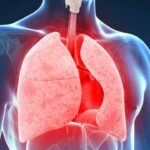 Until 20 years ago the treatment of pulmonary arterial hypertension (PAH) was based on case reports and small series, and was largely ineffectual. As a deeper understanding of the pathogenesis and pathophysiology of PAH evolved over the subsequent two decades, coupled with epidemiological studies defining the clinical and demographic characteristics of the condition, a renewed interest in treatment development emerged through collaborations between international experts, industry and regulatory agencies. These efforts led to the performance of robust, high-quality clinical trials of novel therapies that targeted putative pathogenic pathways, leading to the approval of more than 10 novel therapies that have beneficially impacted both the quality and duration of life. However, our understanding of PAH remains incomplete and there is no cure. Accordingly, efforts are now focused on identifying novel pathogenic pathways that may be targeted, and applying more rigorous clinical trial designs to better define the efficacy of these new potential treatments and their role in the management scheme. The whole article you can read here.
Until 20 years ago the treatment of pulmonary arterial hypertension (PAH) was based on case reports and small series, and was largely ineffectual. As a deeper understanding of the pathogenesis and pathophysiology of PAH evolved over the subsequent two decades, coupled with epidemiological studies defining the clinical and demographic characteristics of the condition, a renewed interest in treatment development emerged through collaborations between international experts, industry and regulatory agencies. These efforts led to the performance of robust, high-quality clinical trials of novel therapies that targeted putative pathogenic pathways, leading to the approval of more than 10 novel therapies that have beneficially impacted both the quality and duration of life. However, our understanding of PAH remains incomplete and there is no cure. Accordingly, efforts are now focused on identifying novel pathogenic pathways that may be targeted, and applying more rigorous clinical trial designs to better define the efficacy of these new potential treatments and their role in the management scheme. The whole article you can read here.
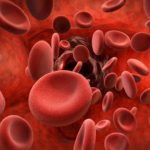 Acquired hemophilia A (AHA) is a rare disease that requires urgent management. Currently, there is no consensus regarding optimal management in aged people. This systematic review aimed to describe diagnosis, clinical features, management, and endpoints in population aged 65 years or over with AHA. A literature search up to and including 31 May 2017 was performed in Medline, Embase, and Scopus. The search strategy on article titles comprised the following terms: “acquired” AND (“hemophilia A” OR “haemophilia A”). Filters were applied for age (65 years or older), publication type (case reports and case series), and studies including human beings only. There was no language restriction in the search strategy. Studies with no data on immunosuppressive therapy, and studies in other languages than English or French were excluded. Patient-level and study-level information was extracted. In total, 270 studies were identified by the literature search. After exclusion of duplicates, and studies presenting exclusion criteria, 80 articles including 159 cases were included in the final review. These 159 cases were 76.1 ± 7.2 years old, and were mainly men (64%). There is wide variety in the therapies used to eradicate the Factor VIII autoantibody, and efficacy is difficult to assess. The majority of patients with AHA receive immunosuppressants. Mortality is high, and likely depends on the rapidity of diagnosis and implementation of adequate management and monitoring. The whole article you can find here.
Acquired hemophilia A (AHA) is a rare disease that requires urgent management. Currently, there is no consensus regarding optimal management in aged people. This systematic review aimed to describe diagnosis, clinical features, management, and endpoints in population aged 65 years or over with AHA. A literature search up to and including 31 May 2017 was performed in Medline, Embase, and Scopus. The search strategy on article titles comprised the following terms: “acquired” AND (“hemophilia A” OR “haemophilia A”). Filters were applied for age (65 years or older), publication type (case reports and case series), and studies including human beings only. There was no language restriction in the search strategy. Studies with no data on immunosuppressive therapy, and studies in other languages than English or French were excluded. Patient-level and study-level information was extracted. In total, 270 studies were identified by the literature search. After exclusion of duplicates, and studies presenting exclusion criteria, 80 articles including 159 cases were included in the final review. These 159 cases were 76.1 ± 7.2 years old, and were mainly men (64%). There is wide variety in the therapies used to eradicate the Factor VIII autoantibody, and efficacy is difficult to assess. The majority of patients with AHA receive immunosuppressants. Mortality is high, and likely depends on the rapidity of diagnosis and implementation of adequate management and monitoring. The whole article you can find here.
 Although the genetic load is high in early-onset Parkinson’s disease, thorough investigation of the genetic diagnostic yield has yet to be established. The objectives of this study were to assess variants in known genes for PD and other movement disorders and to find new candidates in 50 patients with early-onset PD. Although we identified pathogenic variants in 14% of our early-onset PD patients, the majority remain unexplained, and novel candidates need to be validated independently to better further evaluate their role in PD. The whole article you can read here.
Although the genetic load is high in early-onset Parkinson’s disease, thorough investigation of the genetic diagnostic yield has yet to be established. The objectives of this study were to assess variants in known genes for PD and other movement disorders and to find new candidates in 50 patients with early-onset PD. Although we identified pathogenic variants in 14% of our early-onset PD patients, the majority remain unexplained, and novel candidates need to be validated independently to better further evaluate their role in PD. The whole article you can read here.
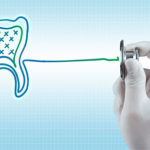 Here, we report brain white matter alterations in individuals clinically and genetically diagnosed with periodontal Ehlers-Danlos syndrome, a rare disease characterized by premature loss of teeth and connective tissue abnormalities. Eight individuals of two families clinically diagnosed with periodontal Ehlers-Danlos syndrome were included in the present study and underwent general physical, dental, and neurological examination. Whole exome sequencing was performed, and all patients included in the study underwent MRI of the brain. Check the results from the study here.
Here, we report brain white matter alterations in individuals clinically and genetically diagnosed with periodontal Ehlers-Danlos syndrome, a rare disease characterized by premature loss of teeth and connective tissue abnormalities. Eight individuals of two families clinically diagnosed with periodontal Ehlers-Danlos syndrome were included in the present study and underwent general physical, dental, and neurological examination. Whole exome sequencing was performed, and all patients included in the study underwent MRI of the brain. Check the results from the study here.
